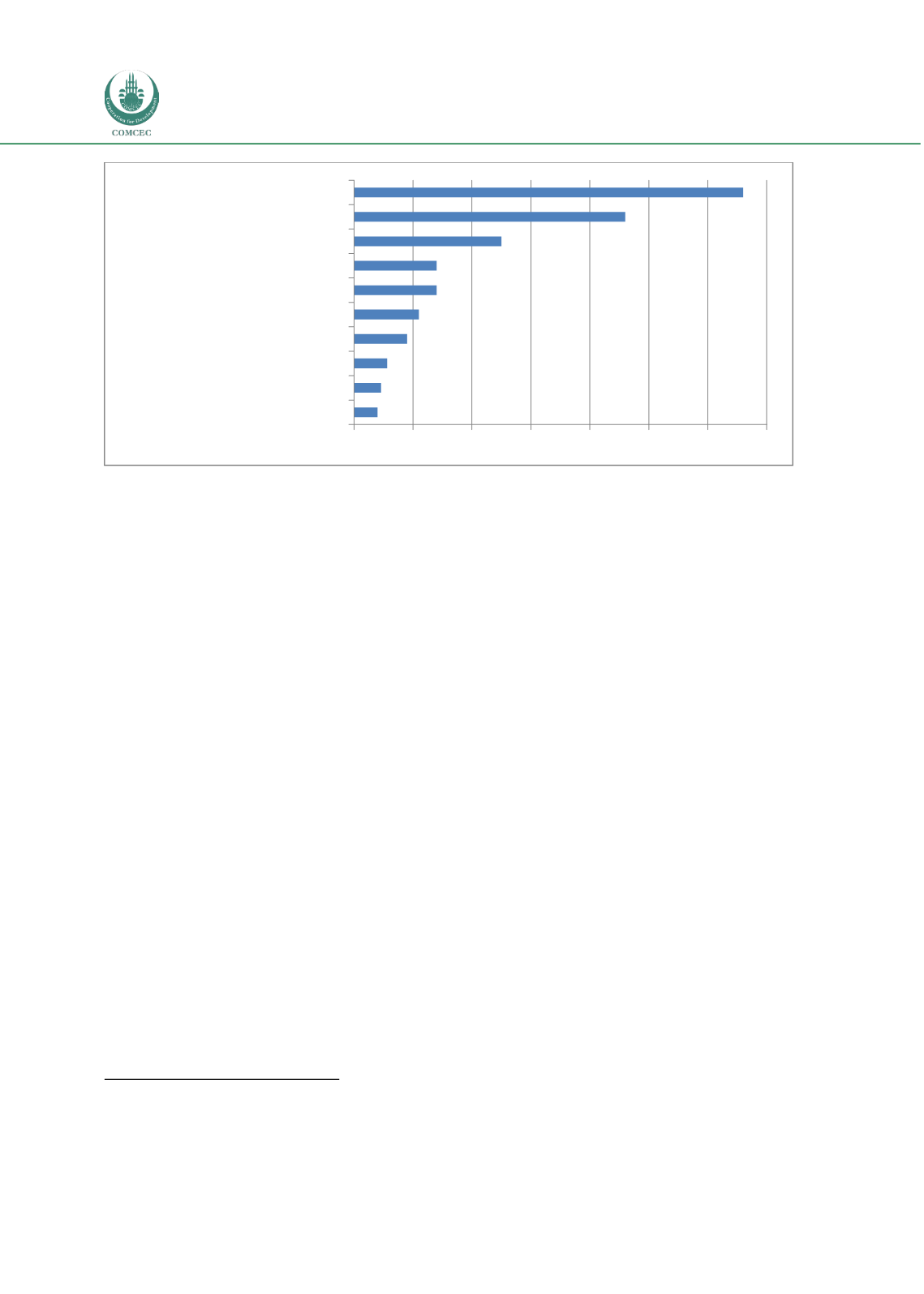

Increasing Agricultural Productivity:
Encouraging Foreign Direct Investments in the COMCEC Region
78
Source:
World Bank, Ethiopia Enterprise Survey (2011)
Results of policy reforms
Many of these policy reforms, as illustrated in Figure 35, have already been undertaken and, as a
partial consequence, inward FDI flows into the agricultural sector have been substantial.
According to a recent study, annual FDI into Ethiopia’s agricultural sector averaged around $500
million between 2000 and 2006, and since then has averaged over $3 billion.
111
The Ethiopian
Government has actively sought and welcomed FDI in the agricultural sector and has made large
tracts of land available to investors. The country has reportedly set aside some 3.6 million
hectares for private agricultural investment, of which, as of 2011, deals covering 520,000 ha. had
already been concluded and 307,000 ha. already transferred to investors.
112
Figure 36: Agricultural Sector FDI in Ethiopia, 2000-2008
111
L. Weissleder (2009) “Foreign Direct Investment in the Agricultural Sector in Ethiopia,” EcoFair Trade Dialogue.
112
Ethiopian
Ministry
of
Agriculture
(2011),
cited
in
The
Africa
Report,
September
28,
2012,
http://www.theafricareport.com/East-Horn-Africa/ethiopia-to-lease-out-land-to-investors-despite-land-grab-concerns.html0
5
10
15
20
25
30
35
Inadequately educated workforce
Transportation
Corruption
Practices of the informal sector
Custom and trade regulations
Tax administration
Tax rates
Electricity
Access to land
Access to finance

















